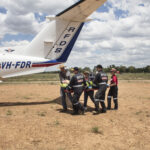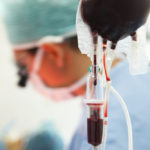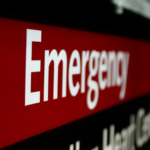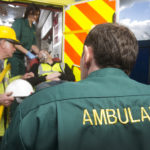Carotid doppler ultrasound with passive leg raise for fluid responsiveness
Fluid therapy is a valuable entity and a valuable clinical entity. However there is uncertainty regarding the fluid responsiveness of patients, particularly those with severe infections. Potential risks of fluid overload (i.e. too much fluid) exist. Excessive fluid administration is associated with increased morbidity and mortality. Carotid doppler ultrasound and passive leg raise is a way of estimating fluid responsiveness. By using this technique we believe that it will tell us if a patient will tolerate an intravenous fluid bolus of 500ml. The aim of this study is to determine if doppler ultrasound of the common carotid artery blood flow…
Principal Investigator:
Dr Robert Osgood
Amount Awarded: $5,150
Institution: Logan Hospital
READ MORE
READ MORE

Prescribing patterns and communication for oxycodone on ED discharge
Pain is a common symptom in ED patients, and is often the primary reason patients seek emergency medical attention. There are, however, growing public health concerns that opioid medications are being increasingly and excessively prescribed for pain. These medications may have a serious side effect profile including sedation, tolerance, and development of addiction, and may subsequently be diverted in the community for non-medical use. A recent baseline audit of local prescribing records revealed oxycodone, an opioid pain medication, is prescribed in approximately 5% of patients discharged home from this ED (with an annual census of 77,500 presentations). Clinical documentation and…
Principal Investigator:
Dr Rina Savage
Amount Awarded: $34,955
Institution: Royal Brisbane & Women's Hospital
READ MORE
READ MORE

Will a replicable ultrasound training intervention improve intravenous cannulation processes?
Most patients need intravenous access in the emergency department, but many suffer multiple attempts before the health provider is successful. This can cause patient distress and delays the time to potentially life-saving treatments. We believe an ultrasound-guided cannulation training program will enable better recognition of patients with difficult intravenous access and increase use of ultrasound during cannulation, hence decreasing time to cannulation, increasing success rates, and reducing the number of punctures required. In this study, we are examining the current practice of inserting intravenous (IV) cannulas in the Emergency Department at the Gold Coast University Hospital. We will consider how…
Principal Investigator:
Dr Amy Archer-Jones
Amount Awarded: $22,541
Institution: Gold Coast University Hospital
READ MORE
READ MORE
Effect of Buddy Taping vs Plaster in Boxer’s Fractures (5thMC) –Buddy Study.
Fractures of the metacarpal bones are the most common hand injuries. Fractures through the neck of the 5th metacarpal (little finger hand bone) account for the majority of these. They are known as Boxer’s Fractures, as they are often sustained during a punch. Boxer’s fractures are traditionally managed in plaster, but in recent years there has been some suggestion that to simply ‘tape’ the little and ring fingers together will allow similar recovery with the advantage of full mobilisation. Currently there is not enough evidence to recommend one treatment over another. Potential benefits of buddy taping include: earlier return to…
Principal Investigator:
Dr Richard Pellatt
Amount Awarded: $17,425
Institution: Gold Coast University Hospital
READ MORE
READ MORE

Paced Electrocardiogram Requiring Fast Emergent Coronary Therapy (PERFECT) Study
The aim of this study is to assess the performance characteristics of the modified Sgarbossa criteria for diagnosis of ACO in VPR. This is a multi-centre international trial. The number of patients presenting to our Emergency Departments with pacemakers continues to increase. Investigating whether such patients are having a heart attack is challenging. For patients without pacemakers, ECG criteria can be used to identify a subset of patients who are having a heart attack. However, for patients with pacemakers, there are no accurate electrocardiograph (ECG) criteria to diagnose heart attacks. This research has the potential to identify AMI in patients…
Principal Investigator:
Dr Gary Mitchell
Amount Awarded: $16,866
Institution: Royal Brisbane & Women's Hospital
READ MORE
READ MORE
Propofol on trial for headaches in the Emergency Department setting
Headache is a common and frequently disabling clinical disorder that accounts for nearly 2% of all emergency department presentations. Often patients are experiencing a headache that is not responding to commonly available medications. However, there is no good evidence to support which available hospital medications consistently offer effective pain relief to individuals with these types of refractory headache. Understandably this is a challenging scenario in the emergency department setting for both the patient and physician that often leads to inadequate or unsatisfactory symptom relief. In a few small trials, there has been promising evidence that the medication propofol is potentially…
Principal Investigator:
Dr Erik Wood
Amount Awarded: $7,860
Institution: Redcliffe Hospital
READ MORE
READ MORE
A brief psychological intervention to promote recovery after mild traumatic brain injury
Mild traumatic brain injury (mTBI) is a common injury with potentially profound consequences. Although many patients recover within a few days to a few weeks, an estimated 15-40% develop post-concussion syndrome (PCS), which consists of an array of cognitive, emotional, and physical symptoms.(TBI symptoms that persist beyond three months often develop into a chronic, potentially life-long, health problem.) PCS is associated with problems returning to work, social difficulties, higher healthcare utilisation, and poorer quality of life. The mitigation of PCS represents a significant clinical problem. An effective evidence-based early intervention to prevent PCS is sorely needed. There is a growing…
Principal Investigator:
Dr Shane Martin
Amount Awarded: $69,657
Institution: Ipswich Hospital
READ MORE
READ MORE
First aid oxygen treatment of divers with decompression sickness
Decompression sickness (DCS), commonly called the bends, involves formation of gas bubbles in the body following scuba diving. These bubbles can cause a variety of problems, ranging from minor aches and pain, to severe stroke-like symptoms. Providing pre-hospital oxygen therapy at the highest concentration possible provides needed oxygen to body tissues, reduces bubbles and can often relieve symptoms. Oxygen has been shown to reduce the number of hyperbaric treatments a diver with DCS will require so improving pre-hospital oxygen delivery will lead to decreased hospital costs. However, the ideal oxygen delivery system has not been determined. Using new techniques and…
Principal Investigator:
Dr Denise Blake
Amount Awarded: $30,003
Institution: Townsville University Hospital
READ MORE
READ MORE

Evaluating rates of skin colonisation with MRSA or Group A Streptococci
Group A Streptococcal (GAS) is known to be the cause of Acute Rheumatic Fever (ARF) and Chronic Rheumatic Heart Disease (CRHD). Worldwide Community acquired (CA) Methicillin Resistant Staphylococcus Aureus (MRSA) is an increasing problem which has also been identified in Australia since the 1990s. At times, the rates in North West HHS have been as high as 30%. This has implications for both the local HHS and the health system more broadly for patients that then require transfer to other facilities. The purpose of this research is to conduct a snapshot study for the evaluation of rate of skin colonisation…
Principal Investigator:
Dr Ulrich Orda
Amount Awarded: $68,224
Institution: Mt Isa Base Hospital
READ MORE
READ MORE

Ketamine versus propofol in sedation of psychiatric patients requiring retrieval
In this study, we will compare the safety and effectiveness of ketamine and propofol in sedating acute psychiatric patients needing aeromedical retrieval. We believe that this is the first trial of its kind which will elucidate the complications, the safety profile and effectiveness of the two drugs in sedating acute psychiatric patients. The study will be a prospective, open-labelled, randomised controlled trial. Patients will be drawn the Northern Territory and Queensland. Through this study, we will better inform clinicians in their choice of a suitable sedation agent and potential provide an additional sedation choice in aeromedical and other critical care…
Principal Investigator:
Dr Vinay Gangathimmaiah
Amount Awarded: $8,400
Institution: The Townsville Hospital
READ MORE
READ MORE

Is prednisolone an effective treatment for Bell’s Palsy in children?
Bell’s palsy or acute idiopathic lower motor neurone facial paralysis is characterised by sudden onset paralysis or weakness of the muscles to one side of the face controlled by the facial nerve. It is the third most common neurological reason for children to present acutely to hospital. In adults, there is conclusive evidence from two major recent trials that a short course of prednisolone, a cheap, widely available and safe steroid, can significantly increase the number of Bell’s palsy patients who completely recover. While the medical problems associated with Bell’s palsy are similar, in children there is no good evidence…
Principal Investigator:
Dr Shane George
Amount Awarded: $68,179
Institution: Gold Coast University Hospital
READ MORE
READ MORE

Link between clinical errors and emergency shift patterns
There is a well-established link between shift work, nurse exhaustion and clinical errors. However there is a lack of research focusing specifically on emergency departments (ED) and nurse rostering patterns. ED nurses are at particular risk of fatigue due to the fast-paced and demanding nature of the work environment caring for high acuity patients, increasing the risk of clinical errors and threatening patient safety. Shift work in the ED is an around-the-clock occupation, frequently nurses are required to commence work at 07:00 on the morning following a 21:30 finish, a shift pattern termed a “late/early”. Understanding the impact that this…
Principal Investigator:
Dr Ogilvie Thom
Amount Awarded: $19,796
Institution: Nambour General Hospital
READ MORE
READ MORE

The Value of Avoiding the Pain of IV Catheter Failure.
Peripheral intravenous catheters (PIVC) are the most common invasive device utilised in health care, yet have very high failure rates because of infection, phlebitis, occlusion or dislodgement. Previous EMF-funded research (IVL-GONE: Intravenous Lines – Glue or Not Experiment, Bugden et al., 2015) has shown that the addition of two drops of medical grade superglue in addition to standard dressings at the insertion site of PIVCs can reduce the failure rate from 27% to 17% over 48 hours. Reduction in failure rates is expected to have beneficial effects on patient comfort and outcomes, along with hospital flow and costs. Uptake of…
Principal Investigator:
Dr Mark Scott
Amount Awarded: $30,550
Institution: Caboolture Hospital
READ MORE
READ MORE
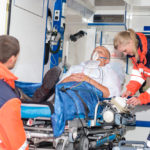
Patients transfers from rural hospitals – are we getting it right?
The aim of this research was to provide preliminary data on patients transferred to Toowoomba Hospital from 18 rural hospitals within the Darling Downs Hospital and Health Service. The data was collected via a retrospective audit in order to identify transfers where quality and safety may not have been optimal. There has been no clear indication of the magnitude of the potential problems with patient transfers and no validated method for obtaining this information.
Principal Investigator:
Dr Sheree Conroy
Amount Awarded: $5,940
Institution: Toowoomba Hospital
READ MORE
READ MORE

Outcomes in Transfers of Head and Neck Trauma Patients for Neuroimaging to Toowoomba Base Hospital Emergency Department.
Patients from Dalby and Kingaroy Hospitals are transferred to Toowoomba Hospital, for CT Scanning and advanced Radiology, when CT and Advanced Radiology services are not available locally. Dalby and Kingaroy Hospitals only have these services during business hours, Monday to Friday, and advanced Radiology when the trained Radiologist is working. This means on weekends and after-hours, patients need to be transferred to Toowoomba for these services. It is hypothesised that a percentage of transfers from rural hospitals for head and neck imaging following minor trauma do not meet ACEM guidelines. Our aim is to investigate the reasons for transfer for…
Principal Investigator:
Dr Jacob Crosdale
Amount Awarded: $8,620
Institution: Toowoomba Hospital
READ MORE
READ MORE
Research Scholarship Grant Dr Jeremy Furyk
Status epilepticus (SE) occurs when seizures do not stop spontaneously and can result in long-term disabilities and occasionally death. There is a paucity of high quality evidence on SE, particularly in children and causes and outcomes are different from adults. This program of research on SE uses mixed methods to address this gap in knowledge. The research includes identifying consensus research priorities among experts and a qualitative evaluation of alternatives to informed consent (which is a potential barrier to prospective emergency research).
Principal Investigator:
Dr Jeremy Furyk
Amount Awarded: $150,000
Institution: The Townsville Hospital
READ MORE
READ MORE

A data linkage and patient outcome study of Aeromedical Retrieval Services in Central Queensland.
Aeromedical services link patients to vital health care. Currently, there is limited understanding of the aeromedical patient journey and outcomes in Queensland. This first-of-its-kind study seeks to take the next step in patient-centered outcomes research and resource allocation planning by linking together existing, but independent emergency department, aeromedical, hospital and deaths databases. A review of the Queensland aeromedical system, (2010-2014) found there is increasing aeromedical use, with an average of 51 flights/ day (102,892 flights) tasked throughout Queensland; with cardiology cases (20%) most common. Yet, there were limitations. First, aggregated data did not clearly differentiate between inter-hospital transfer, back-transfer, multiple-step…
Principal Investigator:
Dr Mark Edwards
Amount Awarded: $50,000
Institution: Rockhampton Base Hospital
READ MORE
READ MORE

Kids THRIVE
When a child presents to an emergency department, or is admitted to the intensive care unit because of a life-threatening condition, they may need immediate treatment to support their breathing. In these circumstances a child is given medication to put them to sleep and the airway is secured with the insertion of a tube into the windpipe. This transition from spontaneous breathing when a child is awake to controlled respiration under anaesthetic via a breathing tube is called intubation. This procedure is technically challenging and is often associated with low oxygen levels in children. New methods of intubation which reduce…
Principal Investigator:
Dr Shane George
Amount Awarded: $282,290
Institution: Gold Coast University Hospital
READ MORE
READ MORE

Too much of a good thing: does fluid resuscitation worsen septic shock?
Patients with infections are a leading cause of presentations to the Emergency Department (ED), with severe sepsis and infection causing an estimated 20,000 deaths each day across the world. Treatment is aimed at eradicating the infection and supporting the patient while recovery can take place. Frequently patients develop low blood pressure as a result of immune response that can ultimately result in further organ injury (termed septic shock). Intravenous fluids are recommended by international guidelines as the first line therapy in the ED to treat low blood pressure of sepsis with the hope of preventing organ injury and death. Despite…
Principal Investigator:
Prof Louise Cullen
Amount Awarded: $77,233
Institution: Royal Brisbane & Women's Hospital
READ MORE
READ MORE

FEISTY – Fibrinogen Early In Severe Trauma study
This clinical trial aims to improve the quality of the resuscitation of patients with traumatic haemorrhage. We are enrolling 100 patients from four major trauma centres in Queensland. Patients admitted with severe traumatic bleeding will be given either Fibrinogen concentrate or cryoprecipitate. Time to administration of these products and effects on blood fibrinogen levels will be measured. We are using innovative technology to identify hypofibrinogenaemia; we will provide data to define the optimal method of replacement and monitoring of the end points of resuscitation; and provide data on the role of fibrinogen concentrate and its use in traumatic haemorrhage. We…
Principal Investigator:
Dr Don Campbell
Amount Awarded: $292,937
Institution: Gold Coast University Hospital
READ MORE
READ MORE




























